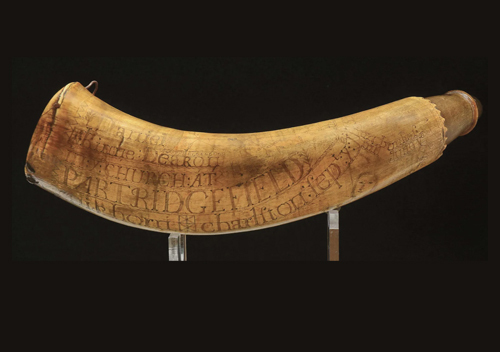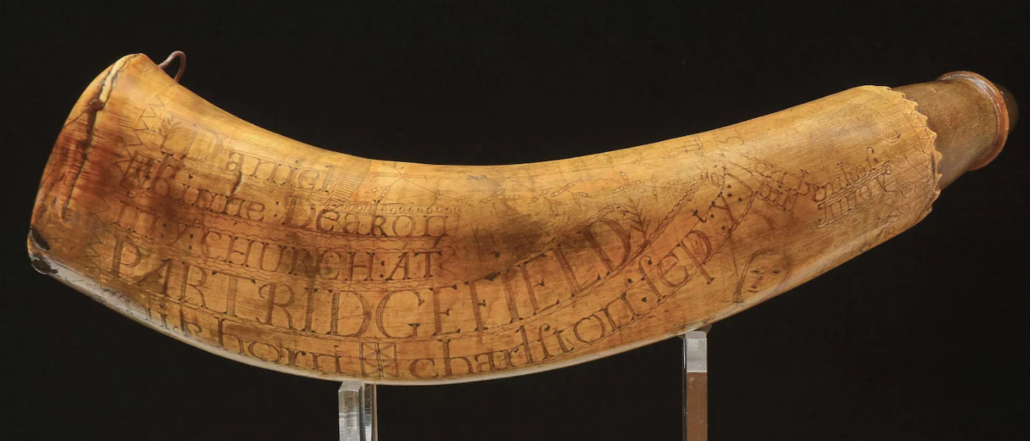
This historic Bunker Hill-engraved powder horn achieved $170,000 plus the buyer’s premium in October 2019. Image courtesy of Dan Morphy Auctions and LiveAuctioneers.
NEW YORK — Powder horns dominated a relatively short era in American history, but their significance and their beauty has made them highly sought-after artifacts.
In the New World, powder horns were primarily used during the French and Indian War and the Revolutionary War. They literally were hollowed-out animal horns, typically from cows or oxen, which soldiers used to carry gun powder and funnel it into their muskets. The curved, tapered shape of the horn was ideal for the purpose, and the keratin that comprised the horn kept the powder dry while also preventing it from igniting while it sat stored and ready for use.
Soldiers who could not afford a professional’s fees carved their own powder horns, but these examples are often crude and primitive in appearance. Most soldiers hired engravers who were stationed at camps or in towns nearby, giving the artisan their name and specifying what other information and imagery they wanted on their horns. Once the carving was done, the engraver would rub a substance such as grease or ash into the engraved areas to make them stand out.
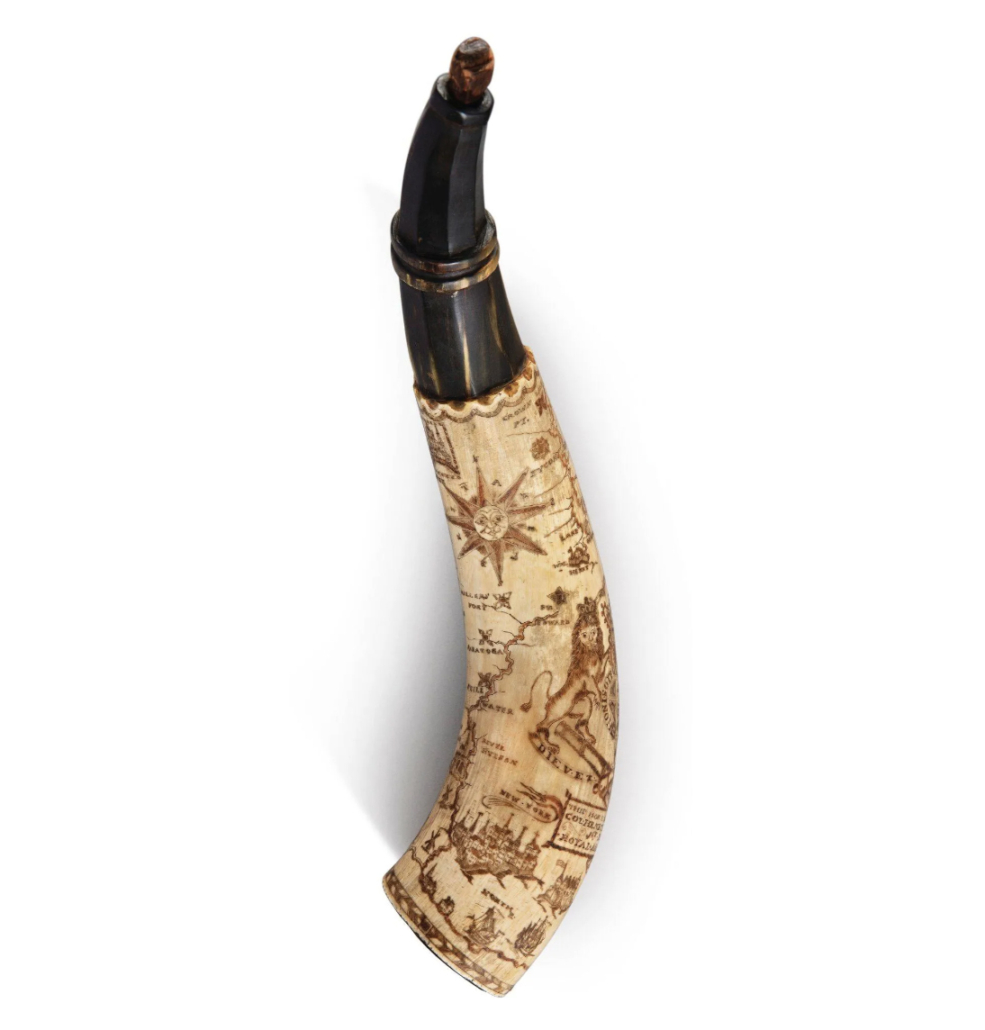
The more ornately carved a powder horn is, the more collectors and scholars like it. The most-coveted ones are founts of personal, historical and geographical information. Because fighting in a war was a source of personal pride, the soldier who wore a powder horn usually asked the engraver to include details about the battles he fought or places where he traveled.
David Geiger, an early arms and armor specialist at Dan Morphy Auctions in Denver, Pennsylvania, said these objects appeal not just to those who collect militaria or powder horns. “They are art. They often have folk art and often have military history and maps on them, which appeal to document collectors and art collectors as well as historical or military people,” he said. “A lot of the names on these powder horns are people who have extensive military records. They have somebody’s name, a date, often the name of the place where the powder horn was made, and sometimes who made the powder horn and where those people were because of the maps shown on the powder horns.”
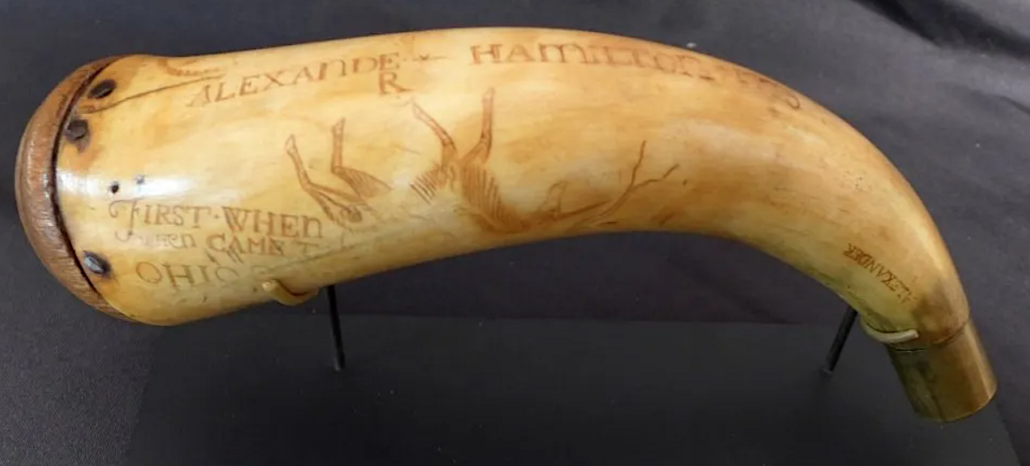
Collectors consider the decoration on powder horns but value the names on the horns just as much, and sometimes more. “The attributes that would make them more expensive are if the person is identifiable: whose name is on the horn, and what that person did either in the French and Indian War or in the Revolutionary War,” Geiger said. “If they were at important battles such as Bunker Hill, Lexington and Concord, or Saratoga, those horns would be worth a lot more money.”
A perfect example of this is a powder horn Morphy’s sold in October 2019 for $170,000 plus the buyer’s premium. The hefty sum is thought to be a world auction record for a powder horn. It is engraved with its owner’s name, Daniel Kinne (or Kinney), and also “Bunkor hill” (sic). “It’s one of few horns, maybe the only horn, that says Bunker Hill on the horn,” he added, noting the owner was identified as a deacon from Partridgefield (now Peru), Massachusetts. “That one was very identifiable to a specific battle, and it had very nice art on it as well, so that horn brought a lot of money because of those features.”
John Reznikoff, founder and president of University Archives in Wilton, Connecticut, said beauty and history are the attributes that make a powder horn a hot seller at auction. “Let’s say you have two equally beautiful horns, and one of them is from the War of 1812 and the other one is Bunker Hill. The Bunker Hill will be worth multiples of the War of 1812 because it’s one of the first battles that makes us America [the first being Lexington and Concord],” he said. “Other factors that are important are provenance, where it’s been, where it’s been exhibited and what collections it’s been in. Those are very important because the collector likes to have the security of knowing that other people saw the importance of this artifact.”
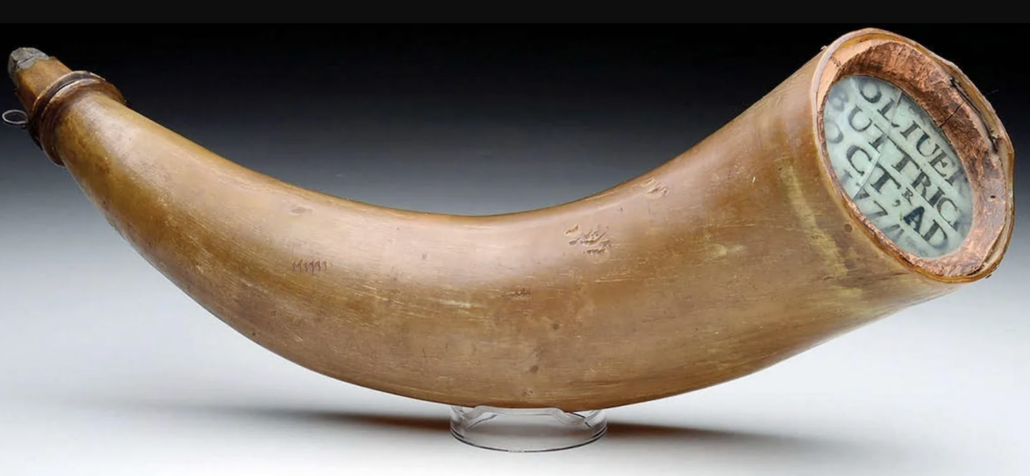
University Archives sold a Revolutionary War powder horn used at the Battle of Concord by Minuteman Oliver Buttrick, a member of one of Concord’s oldest families, for $65,000 plus the buyer’s premium in November 2021. Adding to its rarity was a glass lens at the base that contained an ownership label on vellum reading “Oliver Buttrick, OCTR. AD 1774.” This type of decoration, instead of engraving, has only been seen on a few other 18th-century powder horns.
Especially prized are horns that are lavishly illustrated and feature both the engraver’s and the owner’s names. “If the horn is signed by the maker, or you can tell who the maker is based on the attributes or the style of the engraving, that also increases the value tremendously,” Geiger said. A powder horn engraved with a map depicting the Forbes Road was made for owner John Cox by engraver John Fox. It brought $72,500 plus the buyer’s premium in September 2018 at Dan Morphy Auctions. The map starts out in the Philadelphia Harbor and ends with misspellings of Fort Ontario and Fort Duquesne.
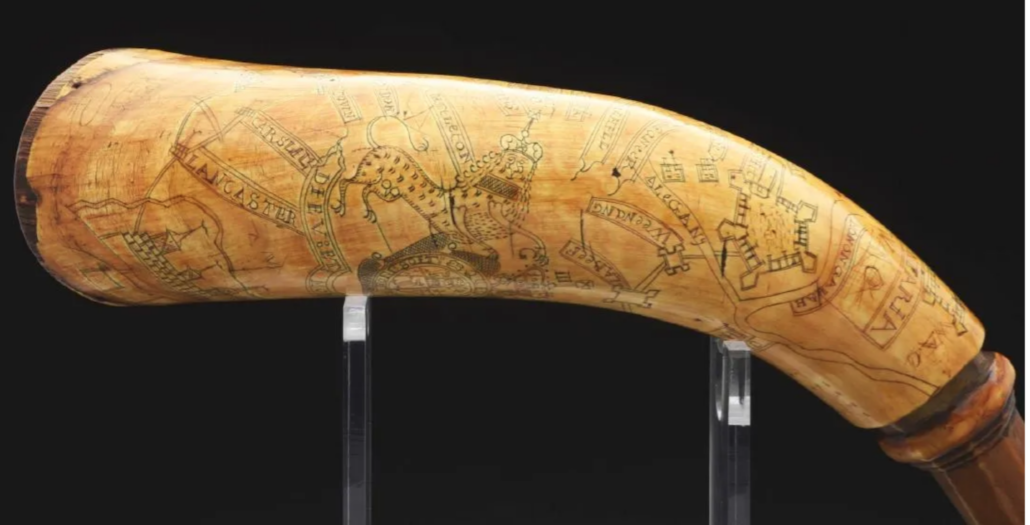
Geographic features and maps can greatly enhance the value of powder horns. A case in point is a French and Indian War powder horn, dated 1760 and carried by Colonel Henry Bouquet (1719-1765). It brought $40,000 plus the buyer’s premium in January 2021 at Arader Galleries. It includes a lion, a coat of arms, buildings and rivers.
Illustrating the demand for strong provenance is an Alexander Hamilton powder horn from 1773 that attained $94,000 plus the buyer’s premium in January 2016 at Sterling Associates. Among its engraved decorations are a large unicorn, a cinquefoil, several roundels and Hamilton’s name in bold letters.
Geiger cautions potential buyers who are new to the field to be wary of the large number of forgeries, and to do their homework and buy from reputable sources. The late renowned collector William Guthman issued warnings as early as the 1990s that unscrupulous people had carved earlier dates onto powder horns well after the relevant war ended to prove ancestors fought and qualified for war pensions, in addition to the standard, unaffiliated miscreants who faked powder horns for money. Yes, be wary and be alert, but don’t let the need for care scare you away from collecting powder horns, which have the power to transport you back to the heady times when the Colonies evolved into the United States of America.


